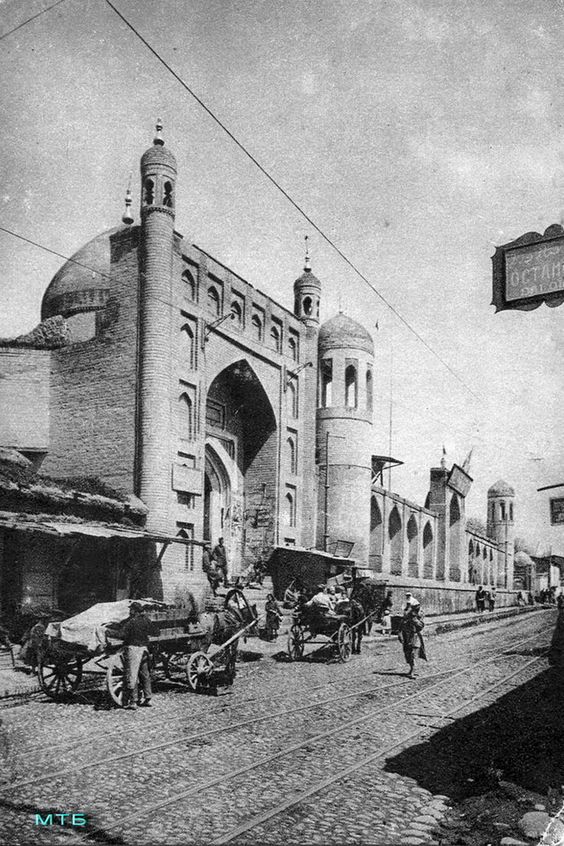History of Tashkent

The exact time of founding of the city is unknown. For the first time, the area coinciding with the area of Tashkent is mentioned in the Chinese primary sources of II century BC under the name of Yuini. In the later sources the same area was called Zheshi, Chach, Shash or Shi. The sign corresponding to the last sound combination is used in the meaning of “stone” that often compares with a Turkic name tash «stone» + kend «settlement».
It is necessary to notice, that for the first time the name of Tashkent was mentioned only in XI century.
The first urban settlement in this area has sprung up in IV-V c. B.C. During this period Tashkent is mentioned in primary sources as the city of Chach (Shash). Also, a number of implements were found in the territory of this ancient settlement. The sets of bronze mirrors and coins of states of the beginning of the new era were also found in the burial mounds near Tashkent.
In the IV century Chach region merges in the newly created Turkic Kaganate. The Kaganate had its borders stretched till Korean kingdom named Koguryo in the East and till Azov and Black Sea in the West. In the VII century Kaganate had been having domestic troubles by the reason of power struggle between a number of political groups. This made the Kaganate break into separate territories.
In the beginning of VIII century Chach was conquered by Arabs. In VIII-IX centuries it had the name of Binkent as the center of independent state named Chach (Shash). According to the calculations which were made by Arabian scientists, the location of Binkent aligned with the location of Tashkent.
In IX-X centuries the city becomes a part of the state of Samanids, since the end of X and the beginning of XIII centuries it is a part of the state of Karakhanids and Karachinese. In the beginning of XIII century Tashkent was conquered by Muhammed Ala-ad-din the shah of Khorezm. In 1214 on an order of the shah the city was destroyed and the habitants were resettled to another place. In XIV century Tashkent was conquered by Timur (Tamerlan) and was made into one of the biggest fortresses of the state of Timurids. In the latter half of XVI century Tashkent had joined to Khanate of Bukhara. In XVII-XVIII cc. had been conquering by Kazakhs and Kalmyks. In 1809 it became a part of Khanate of Kokand and by the middle of XIX century became one of the largest centers of trade with Russian merchants.
June 15, 1865, the city of Tashkent was conquered by Russian troops under the command of general Chernyaev. In the end of XIX century Tashkent had achieved a big prosperity as the centre of Syrdarya region and Turkestan Governorate General. Near the old “Arabian” part of the city there had been built a new one - “Russian” city as a residence of the Governor. So, the urban life, in its European way of saying, was only in the “Russian” part where there were a lot of government departments, schools, scientific associations, etc.
After the revolution was end Tashkent became a part of Turkestan ASSR. In 1924, Samarkand became a capital of Uzbek SSR, but in 1930 Tashkent redeemed its capital name. During the Great Patriotic War the city of Tashkent became one of the main evacuation centers in the Soviet Union. In this time a large number of industrial enterprises, educational establishments, theatres, motion-picture studios (such as “Mosfilm” and “Lenfilm”) had been evacuated here from the west regions of the USSR.
The earthquake of 1966 became the largest shock for a postwar Tashkent. A large number of residence buildings, government departments and industrial enterprises had been destroyed in the result of the earthquake. According to some reports about 300.000 people were left without a roof over the head. The results of the earthquake had been eliminated during a few following years with the participation of all Soviet countries.
Since September 1991 and now Tashkent is the capital of the independent Republic of Uzbekistan and the centre of Tashkent region.
